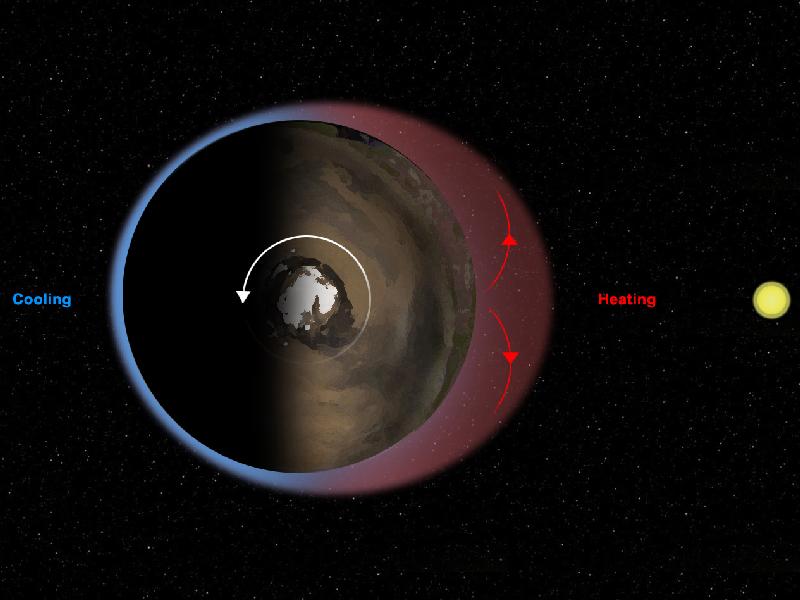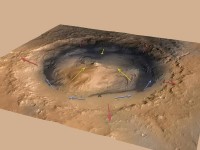This diagram illustrates Mars’ “thermal tides,” a weather phenomenon responsible for large, daily variations in pressure at the Martian surface. Sunlight heats the surface and atmosphere on the day side of the planet, causing air to expand upwards. (Image credit: NASA/JPL-Caltech/Ashima Research/SWRI)
Home This diagram illustrates Mars’ “thermal tides,” a weather phenomenon responsible for large, daily variations in pressure at the Martian surface. Sunlight heats the surface and atmosphere on the day side of the planet, causing air to expand upwards. (Image credit: NASA/JPL-Caltech/Ashima Research/SWRI) This diagram illustrates Mars' "thermal tides," a weather phenomenon responsible for large, daily variations in pressure at the Martian surface. Sunlight heats the surface and atmosphere on the day side of the planet, causing air to expand upwards. (Image credit: NASA/JPL-Caltech/Ashima Research/SWRI)
This diagram illustrates Mars’ “thermal tides,” a weather phenomenon responsible for large, daily variations in pressure at the Martian surface. Sunlight heats the surface and atmosphere on the day side of the planet, causing air to expand upwards. (Image credit: NASA/JPL-Caltech/Ashima Research/SWRI)



